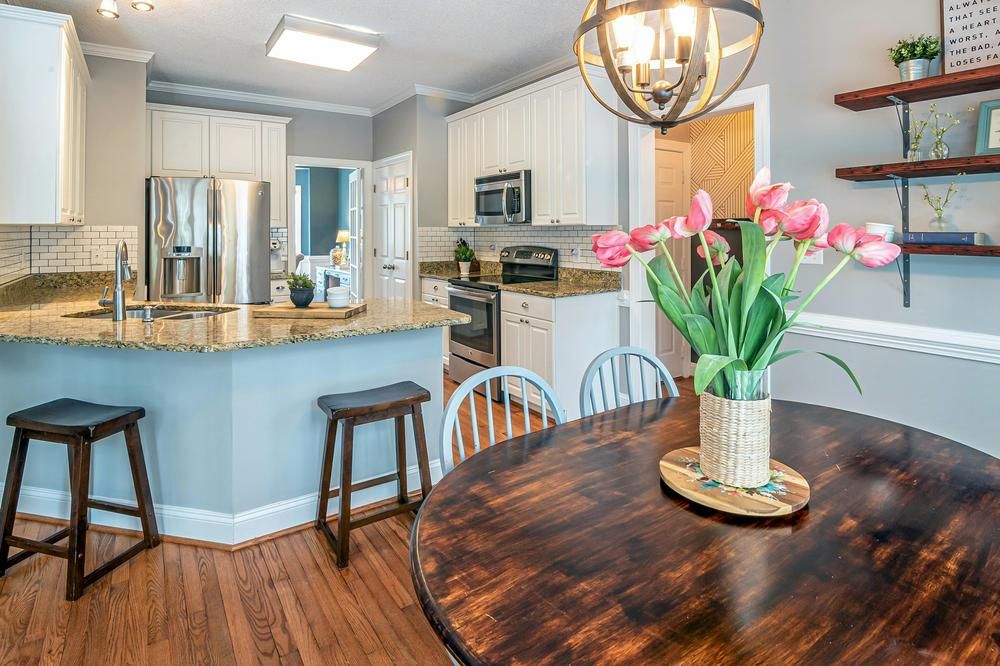Spring in the St. Croix Valley is an exciting time for home sales, and if you’re thinking about putting your home on the market, you’re in good company. However, as you step into this busy season, you might be wondering: How do I price my home correctly?
The right price can truly make or break your sale. Set it too high, and you risk deterring potential buyers. Set it too low, and you might miss out on some cash that could have gone into your pocket. Let’s explore how to find that sweet spot—where your home sells quickly and at a price that makes sense for you.
Understand the Current Market
First off, what's the housing market like in the St. Croix Valley this spring? Interest rates are still a significant factor to consider. They’ve eased a bit from the peaks we saw in 2023, but they’re still hovering at levels that make buyers think twice. Many are eager to secure a deal before rates shift again, so there’s still a pool of active buyers.
Inventory levels are also critical. In the St. Croix Valley, we saw a slight uptick in listings compared to last year, but many neighborhoods are still facing tight inventory. For instance, homes in Hudson are selling quickly due to the limited options available, giving sellers a solid advantage. Conversely, areas like River Falls may have more competition, so pricing becomes vital there.
Additionally, this spring, the economic environment—especially concerning tariffs and inflation—affects buyer sentiment. Homeowners, potential buyers, and real estate professionals are all feeling the impact of these issues on mortgage rates and overall purchasing power.
The Role of Seasonality
Spring isn’t just a busy time for buyers; it’s when sellers flood the market, too. Homes tend to look their best with blooming flowers and pleasant weather, which means you’ll have more competition. Pricing your home correctly from the start will set you apart in this bustling season.
Remember, buyers often feel more emotional during spring, imagining their summers spent in a new home. Make sure your home is in prime condition for showings, showcasing its best features to capture that emotional connection.
Get a Comparative Market Analysis (CMA)
A Comparative Market Analysis, or CMA, is one of the best tools at your disposal for determining your home’s value. This analysis looks at recent sales of similar homes in your neighborhood, allowing you to see how your property stacks up in terms of size, condition, age, and any upgrades you’ve made.
Keep in mind that sales from six months ago might not reflect today’s market dynamics. Spring brings new buyers and shifts in demand, so ensure your agent pulls the latest data. If you need help with an accurate CMA that includes the freshest market stats, feel free to reach out.
Think Like a Buyer
This one can be a challenge. Try to view your home through a buyer’s perspective. You might adore that custom kitchen backsplash or the cozy reading nook you created, but will buyers share your enthusiasm?
Buyers will often compare several properties and are on the lookout for value. If a comparable home nearby features a renovated bathroom and yours doesn’t, it might be wise to price yours slightly lower to attract interest.
Don’t Overprice “Just to See”
It’s tempting to set a high price and hope buyers will negotiate down. However, the reality is that overpriced homes tend to linger on the market. The longer a home sits, the more potential buyers start to wonder what’s wrong with it.
If you’re not seeing interest after the first couple of weeks, it may be time to reconsider your pricing strategy. We can keep an eye on feedback from showings and spot any patterns—if buyers love the layout but hesitate at the price, that’s a clear sign.
Factor in Your Goals
Are you looking for a quick sale to transition into your next home, or are you willing to wait for the best offer? Your pricing strategy should reflect your priorities.
If speed is your main concern, pricing slightly below market value can create competition, potentially leading to a bidding war. On the other hand, if you’re not in a hurry, you might have some leeway to set a higher price and negotiate later.
Consider Recent Upgrades and Repairs
Have you recently remodeled your kitchen, added a deck, or replaced the roof? These improvements can enhance your home’s value, but they don’t always translate to a dollar-for-dollar increase. Certain upgrades, like kitchen and bathroom renovations, typically offer better returns than others. Make sure your agent considers these factors when determining your pricing.
Conversely, if your home has outdated features or needs repairs, buyers will likely expect a lower price. Taking care of minor repairs and touch-ups before listing can help you avoid lowball offers.
Monitor Neighborhood Trends
Keep an eye on what’s happening in your neighborhood. Are homes selling quickly? Are there multiple offers on properties? Or are houses sitting on the market for weeks with price reductions?
We can help you analyze these trends and decide whether it’s best to price your home on the higher or lower end of your range.
Be Prepared to Negotiate
Stay calm and flexible, and work with your agent to find common ground. A well-negotiated sale can be beneficial for both parties.
Stay Flexible
Even with careful planning, the market can change. Maybe a competing home in your neighborhood drops its price, or buyer demand suddenly spikes. Be open to adjusting your price if necessary.
Your agent is an invaluable resource for monitoring trends and advising you on tweaks that could help your home sell faster.
Final Thoughts
Pricing your home isn’t an exact science, but it doesn’t have to be a guessing game either. By understanding local market conditions, thinking like a buyer, and collaborating with a knowledgeable agent, you can confidently set a price that works for you.
If you’re ready to take the next step, get in touch for a personalized pricing strategy tailored to your home and your goals.






